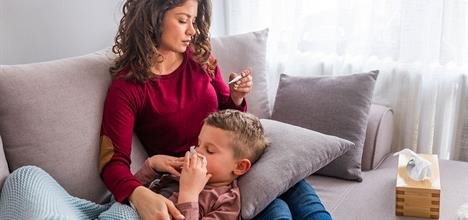Birth through age 5 is an exciting time to watch your child grow and learn to do many new things. These are the years you'll likely see them start smiling, talking, walking and making friends for the first time.
While most children meet developmental milestones around a certain age, some may take longer to reach them. If you ever have any questions about your child's development, it is always good to talk to your pediatrician. Trust your instincts—you know your child best!
Here are just some of the physical, social, emotional and cognitive milestones you can expect to see as your child grows:
By 2 months: Tries to look you and smiles when you talk or smile at them.
By 4 months: Looks at you and moves or makes sounds to get or keep your attention.
By 6 months: Likes to look at themselves in the mirror. Brings objects to their mouth.
By 9 months: Looks when you call their name. Makes different sounds like "mamamama" and "babababa."
Around 12 months: Play games with you like pat-a-cake. Looks for things they see you hide, like a toy under a blanket.
At 18 months: Moves away from you, but looks to make sure you are close by. Points to show you something interesting.
By 2 years: Points to things in a book when you ask a question like "Where is the bear?" Tries to use switches, knobs or buttons on a toy.
By 3 years: Talks with you in conversation using 2 to 3 back-and-forth exchanges. Talks well enough for others to understand, most of the time.
By 4 years: Pretends to be something else during play (teacher, superhero, dog). Tells what comes next in a well-known story.
By 5 years: Answers simple questions about a story after hearing it, like when you ask, "What happened to the friend?" Can follow rules or take turns when playing games with other children.
3 things to remember
Celebrate developmental milestones performed by your child.
Act early by talking to your pediatrician about concerns.
Keep in mind that you know your child best.
Next steps: track your child's development
You can celebrate and easily track your child's development with these free milestone checklists from the Center for Diseases Control and Prevention (CDC). Take the completed checklist to your child's next well-child visit at the pediatrician. You can share all the milestones your child is reaching and any concerns you may have about your child's development, including those that may not be captured through milestones.
If you or your pediatrician have any concerns about your child's development, ask for a referral to a medical, school or developmental specialist. Be sure to follow through on scheduling and attending appointments with any specialists. They will be able to do a more complete evaluation on your child. They will also work with your pediatrician to decide on the next steps to take to help support your child's growth and development.
Developmental screening: recommendation from the AAP
The American Academy of Pediatrics (AAP) recommends that children receive screening for development during routine checkups at 9 months, 18 months and 30 months and for autism at 18 and 24 months. Screening also can be done whenever a parent or provider has a concern.
Not sure if your child has had a developmental screening? Ask your pediatrician to screen your child or to share results with you from the most recent screen.






